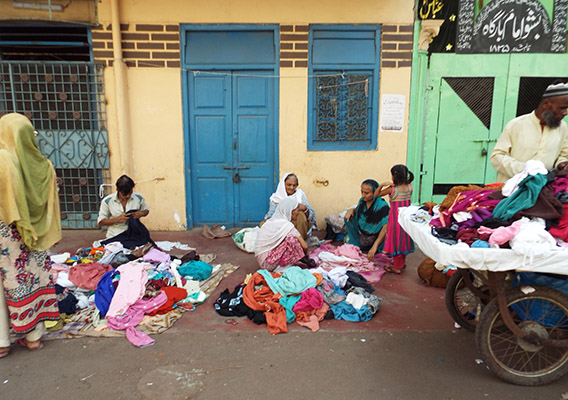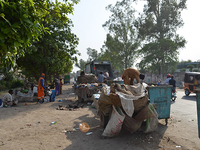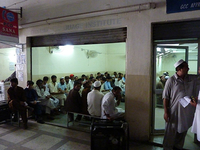Economic Participation and Violence against Women

May 30, 2017
Development agencies and international financial institutions argue that increasing women’s economic participation will lead to both economic growth and women’s empowerment – a win-win situation. Further, it is often assumed that women who are economically active will be less vulnerable to gender-based violence.
Based on fieldwork in Lyari, Pakistan – one of Karachi’s oldest working-class settlements – my research tests those assumptions against a more complex reality. With only 22% of women in paid employment, Pakistan has one of the world’s lowest female labor force participation rates. My field site, Lyari, mirrors national level statistics, but while most employed women in Pakistan work in agriculture, most of Lyari’s working women are employed as low-paid domestic workers in more affluent parts of the city or as teachers in government and private schools. While the rate of paid employment amongst women may be low, there is a dramatic increase over previous generations – though the jobs available to women in today’s neoliberal economy are generally low-paid, insecure and unregulated.
But being “economically active” does not necessarily translate into “empowerment.” As Naila Kabeer argues, market forces often reproduce gender inequality, through unequal wage rates and hiring practices. Similarly, while policy makers often assume economic engagement gives women control over their own incomes or access to social and legal support, and that greater financial independence allows women to exit abusive relationships, reality is more complicated; the effects of women’s economic participation depends on the nature of their employment, power relations within their families, and the dynamics within their respective communities.
Does earning an income protect women from gender-based violence – estimated to affect between 39% and 90% of all married women in Pakistan, with the vast majority of cases going unreported? Are working women better able to resist common forms of economic or material exploitation by employers who pay women lower wages or who deny them pay altogether? Do women who earn wages gain greater control over household resources or their own earnings?
My discussions with women in Lyari reveal a complex relationship between women’s paid employment and experiences of domestic violence. For some women, earning an income provided them with the ability to leave or at least imagine leaving an abusive marriage. But even for wage-earners, the social pressure to remain – especially if children are involved – remains a powerful deterrent to leaving a violent marriage.
Many women described the double burden of paid work and domestic responsibilities as its own form of violence: paid work sometimes increased household tensions, as even unemployed men often expected their wives to fulfill domestic responsibilities, sometimes leading to arguments and even violence. Most women in low-paying jobs would stay home if they could afford to, and some resented their husbands’ failure to support them financially. While some women recognized that earning offered some level of independence, and while a few said they enjoyed being away from home, most would prefer not having to face the double burden of earning and caring for the household.
For the handful of women who had higher-paying, more secure forms of employment, economic activity was framed as a choice rather than a necessity, and as a source of personal fulfillment. However, this did not come without social and psychological costs: women who worked outside the home before marriage – especially if they traveled outside of their neighborhood and earned relatively well – were often subject to gossip, taunts, disapproval and scorn, causing great emotional distress for them, threatening their reputation and putting their ability to find a marriage partner at risk.
On a positive note, the research revealed a generational shift. Many older women spoke about remaining in violent marriages, framing suffering as a mark of patience and virtue. Younger women, however, often expressed disapproval of violence, suggesting women should leave abusive marriages, either by returning to their natal homes or, more rarely, by establishing an independent household. While divorce is still frowned upon, and many women still feel pressure to remain within violent marriages, more and more women seem to be formulating strategies of resistance within constrained circumstances. Certainly, access to an independent income helps women to leave violent marriages even if it does not guarantee that they can do so.
Overall, my research suggests that women’s economic engagement does not guarantee empowerment. While it can strengthen women’s bargaining position, outside employment comes with costs. Women in Pakistan are entering the labor market in greater numbers, but they do so at a time when there are few well-paid, secure employment options available. To really empower women, employment must be accompanied by wider structural changes: women need jobs that are well paid and secure, gendered power relations within the home and the community must shift so that domestic responsibilities are shared by men, and women’s increased mobility and independence must become widely accepted.
Nida Kirmani, Lahore University of Management Sciences, Pakistan <nida.kirmani@lums.edu.pk>





















